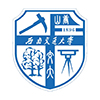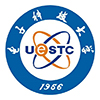Plenary Talks
DATE: 3/20/2019
 |
Chennupati Jagadish Australian National University, Australia Title: Semiconductor Nanowires for Optoelectronics Applications |
| Prof. Jagadish is a Distinguished Professor of the Australian National University. He is currently serving as President of IEEE Photonics Society and President of Australian Materials Research Society. He is serving as Editor-in-Chief of Progress in Quantum Electronics. His research interests include compound semiconductor optoelectronics, nanotechnology, photovoltaics and neuroscience and neurotechnology. He is a Fellow of the Australian Academy of Science and the Australian Academy of Technological Sciences and Engineering, a Fellow of IEEE, APS, OSA, SPIE, AAAS, TWAS, etc., a Fellow of the US National Academy of Inventors, an Honorary Fellow of the Indian Academy of Sciences and Indian National Academy of Engineering. He is currently serving as an Editor-in-Chief of Progress in Quantum Electronic, an Editor of the Journal Semiconductor Technology and Science and an Associate Editor of Applied Physics Reviews and Journal of Physics D: Applied Physics. He has been awarded Australian Federation Fellowship (2004-2009) and Australian Laureate Fellowship (2009-2014) by the Australian Research Council. He has received many awards, including The Quantum Device Award (ISCS, 2010), IEEE Pioneer in Nanotechnology Award (2015), IEEE Photonics Society Engineering Achievement Award (2015), Distinguished Fellow of the Chinese Academy of Sciences President's International Fellowship Initiative (2016), Welker Award from ISCS (2017), IUMRS Somiya Award (2017) and AVS Nanotechnology Recognition Award (2018). |
|
 |
Alan E. Willner University of Southern California, USA Title: High-Capacity Optical Communications using Multiplexing of Multiple Orthogonal Beams |
| Prof. Alan Willner is currently the Steven and Kathryn Sample Chaired Professor of the Univ. of Southern California. He is a member of the U.S. National Academy of Engineering, International Fellow of the U.K. Royal Academy of Engineering, Presidential Faculty Fellows Award from the White House. He is a Fellow of the AAAS, IEEE, IET, OSA, SPIE and National Academy of Inventors. Prof. Willner has received many awards, including IEEE Eric E. Sumner Award, Paul Forman Engineering Excellence Award (OSA), IEEE Photonics Society Engineering Achievement Award, SPIE President's Award, OSA Robert Hopkins Leadership Award, etc. He is a Member of the U.S. Army Science Board, was a Member of the Defense Sciences Research Council and co-Chair of the U.S. National Academies Committee on the Optics and Photonics Study. He was the President of the Optical Society (OSA) and President of the IEEE Photonics Society (formerly LEOS). Prof. Willner was the Editor-in-Chief of Journal of Lightwave Technology (JLT), Optics Letter and IEEE Journal of Selected Topics in Quantum Electronics, as well as the associate Editor or guest editor of various journals. Prof. Willner has >1300 publications, including one book, 9 edited books, >35 U.S. patents, >39 keynotes/plenaries, >23 book chapters, >375 refereed journal papers, and >225 invited papers/presentations. His research is in optical technologies, including: communications, signal processing, networks, and subsystems. |
|
 |
Michal Lipson Columbia University, USA |
| Prof. Michal Lipson is the Eugene Higgins Professor at Columbia University. Her research focus is on Nanophotonics and includes the investigation of novel phenomena, as well as the development of novel devices and applications. Prof. Lipson pioneered critical building blocks in the field of Silicon Photonics, which today is recognized as one of the most promising directions for solving the major bottlenecks in microelectronics. She is the inventor of over 30 issued patents and has co-authored more than 200 scientific publications. In recognition of her work in silicon photonics she was elected as a member of the National Academy of Sciences. She was also awarded the NAS Comstock Prize in Physics, the MacArthur Fellowship, the Blavatnik Award, the Optical Society’s R. W. Wood Prize, the IEEE Photonics Award. She is also a Fellow of IEEE and OSA. Since 2014 every year she has been named by Thomson Reuters as a top 1% highly cited researcher in the field of Physics. |
|
 |
Qihuang Gong Peking University, China Title: Ultra-high-Q microcavity optics and photonics |
| Boya Chair Professor of Peking University Cheung Kong Professor of Physics at Peking University, China Professor Qihuang Gong is the Academician of Chinese Academy of Science and member of the world academy of sciences. He is the Founding Director of the Institute of Modern Optics, Peking University. He serves as the Vice President of Peking University, the President of the Chinese Optical Society, and the Vice President of the Chinese Physical Society. He is the Standing Committee member of China Association for Science and Technology, the vice president for ICO (International Commission for Optics) and vice chair for IUPAP C17. His current research interests include ultrafast optics and spectroscopy, nonlinear optics, and mesoscopic optical devices for applications in optical information processing and communication. He has authored more than 600 articles in Science, Nature Photonics, Nature Physics, PNAS, PRL, Physics Report etc. These papers have received approximately 12,000 citations, with an H-index of 46. Prof. Gong has received numerous awards, including The State Natural Science Award (2nd-Class), the Beijing municipal government Science and Technology Award (1st-Class), the Science and Technology Award (1st-Class) of Ministry of Education, the Rao Yutai Physics Prize given by the Chinese Physical Society, the Wang Daheng Prize given by the Chinese Optics Society and HLHL Science and Technology Award. |
|


















 沪公网安备 31011402005523号
沪公网安备 31011402005523号